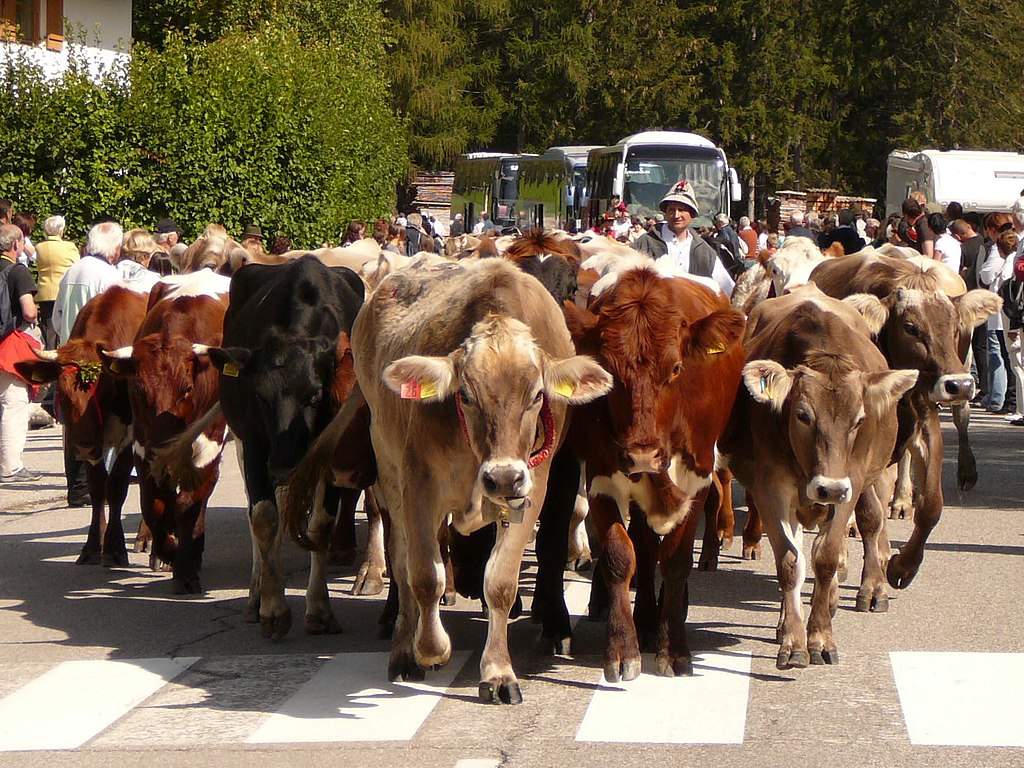Italy has three new UNESCO Intangible World Heritage Sites: they aremountaineering, transhumance and the Perdonanza Celestiniana. Mountaineering (shared with Switzerland and France) is described by UNESCO as “the are of climbing peaks and walls in high mountains, in all seasons, on rocky or icy terrain.” The organization’s note points out that mountaineering “involves physical, technical and intellectual skills, through the use of appropriate techniques, equipment and highly specific tools,” and that “it is a traditional and physical practice characterized by a shared culture made up of knowledge of the high mountain environment, the history of the practice and the values associated with it, and specific skills.”
Transhumance is shared with Greece and Austria: it involves the seasonal migration of pastures along special routes drawn in the Alps and Mediterranean countries. “Every year, in spring and autumn,” UNESCO explains, “thousands of animals are led by groups of shepherds, together with their dogs and horses, along fixed routes between two geographical and climatic areas, from dawn to dusk. Often, herders’ families travel together with their herds. There are two types of transhumance: horizontal transhumance, which takes place between plains or plateaus, and vertical transhumance, which is typical of mountainous regions. Transhumance shapes the relationships between peoples, animals and ecosystems. It involves shared rituals and social practices, care for grazing animals, management of land and water and forest resources, and management of natural hazards. Transhumance pastoralists have a deep understanding of the environment, ecological balance and climate change, and this is one of the most sustainable and efficient farming methods.”
The Perdonanza Celestiniana is an event held annually inL’Aquila on August 28 and 29, and the name derives from the papal bull by which, in 1294, Pope Celestine V granted a plenary indulgence to anyone who entered the basilica of Santa Maria di Collemaggio (precisely August 28-29) following confession and communion. Since then the event has always been held and has been accompanied by other events that take place in the Abruzzo capital throughout the last week of August. The event becomes part of the Intangible Heritage of Humanity because “the practice,” UNESCO explains, “conveys a sense of continuity and cultural identity for the whole community.”
Cultural Heritage Minister Dario Franceschini is proud of the three new Italian heritages. The recognition to mountaineering, according to the minister, “marks a further commitment to the promotion of intercultural dialogue and cooperation. It is also a demonstration of the increasing attention shown by MiBACT in the relationship between cultural policies, local communities and tourism impacts.” Transhumance is defined by him as “a culture, whose origins are lost in time, from which comes a message of integration, not only between landscapes but also between civilizations.” As for the Perdonanza Celestiniana, its celebration, Franceschini stressed, “constitutes a symbol of reconciliation, social cohesion and integration. It reflects the act of forgiveness among local communities, promoting the values of sharing, hospitality and fraternity. It also strengthens communication and relations between generations by creating intense emotional and cultural involvement.”
Pictured: transhumance in Toblach (South Tyrol). Ph. Credit
 |
| UNESCO, three new Intangible World Heritage Sites for Italy: mountaineering, transhumance and Perdonanza Celestiniana |
Warning: the translation into English of the original Italian article was created using automatic tools. We undertake to review all articles, but we do not guarantee the total absence of inaccuracies in the translation due to the program. You can find the original by clicking on the ITA button. If you find any mistake,please contact us.